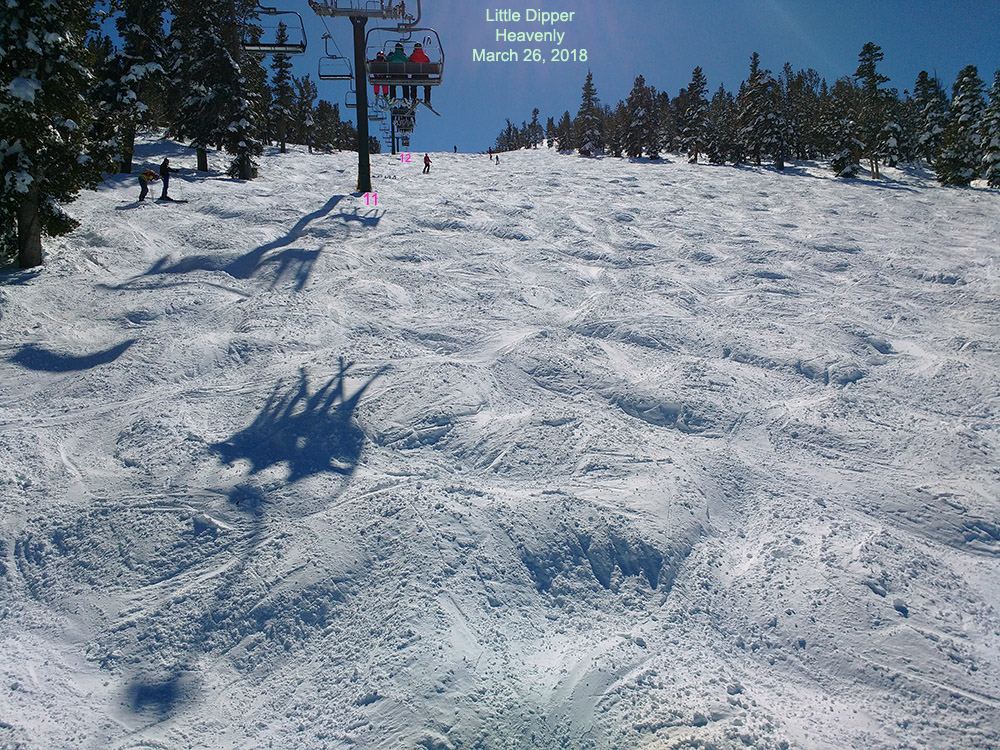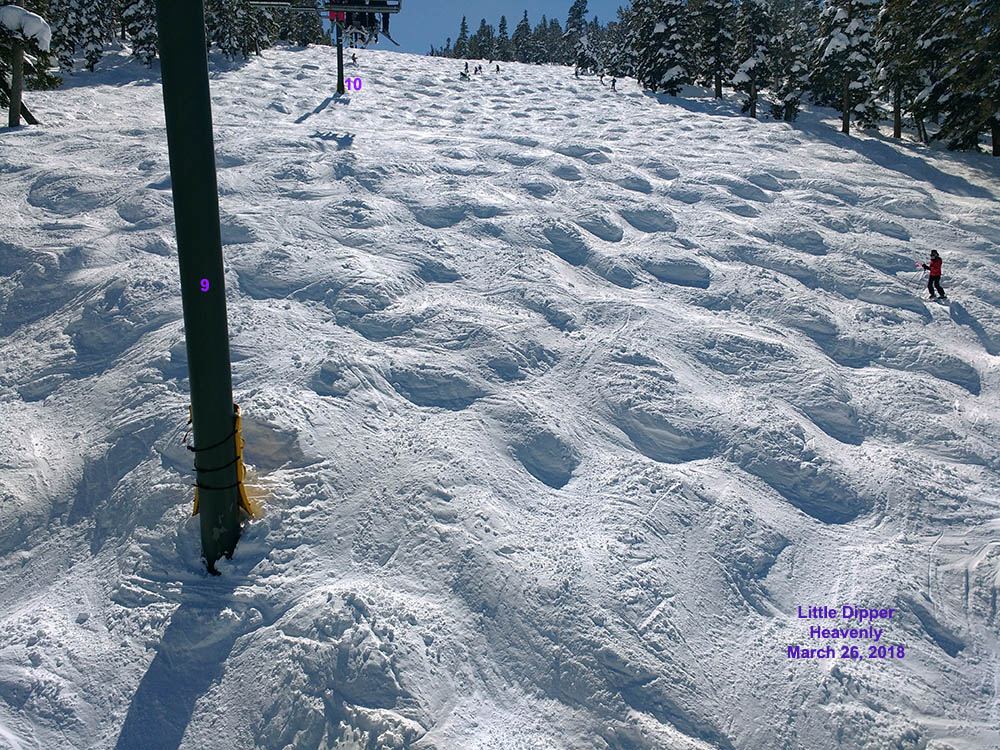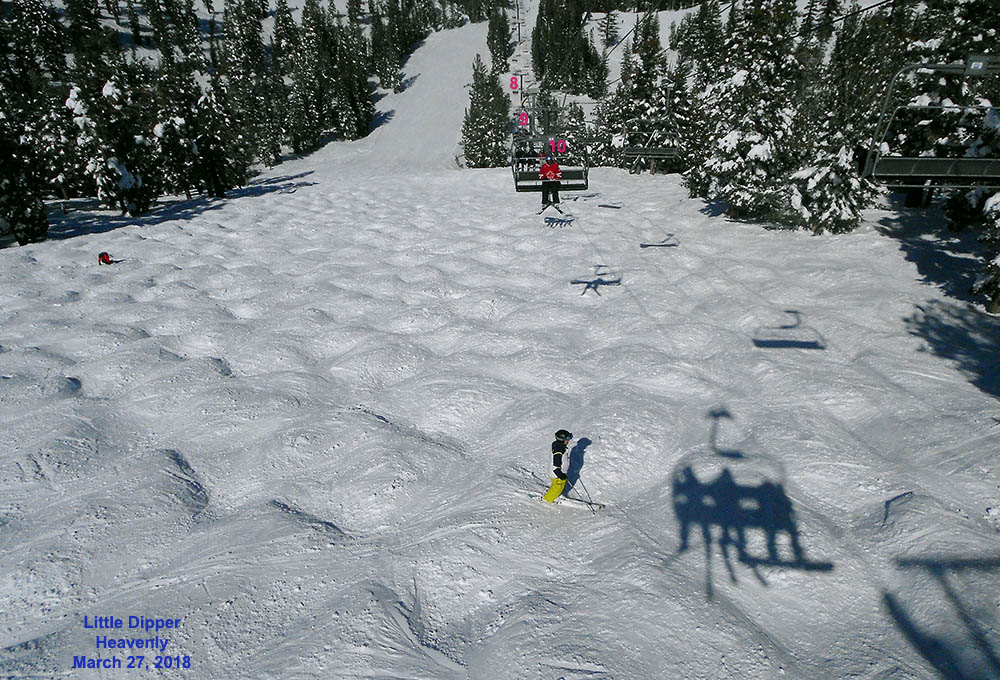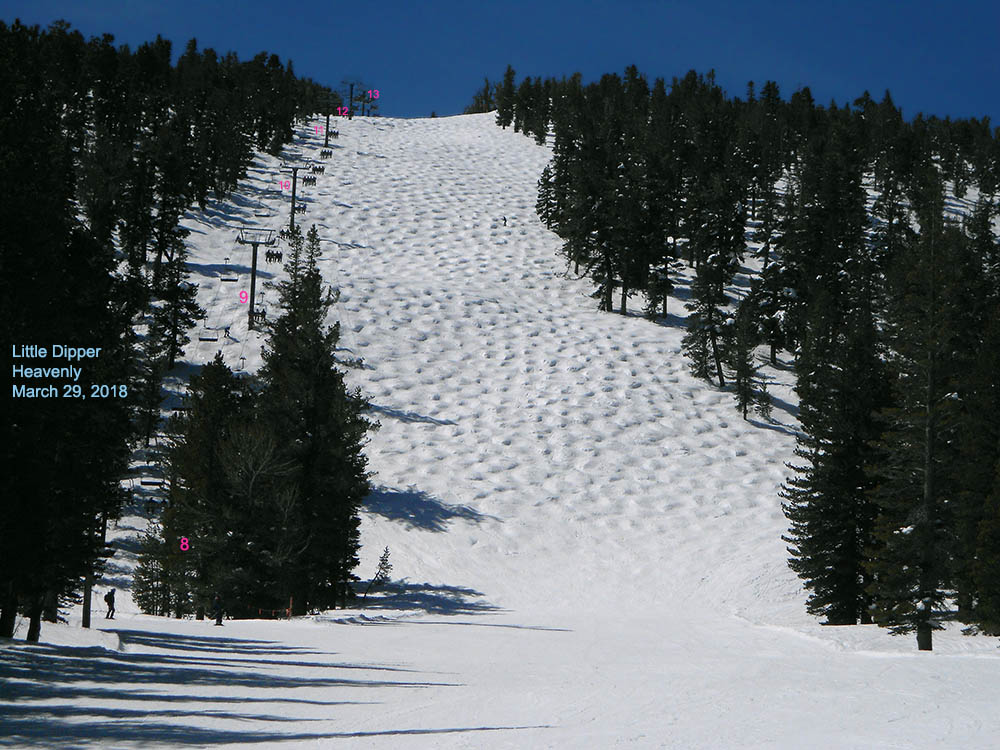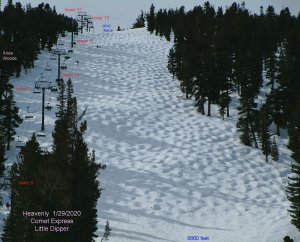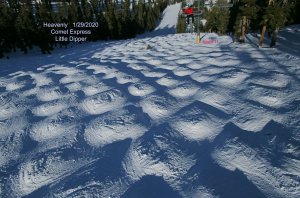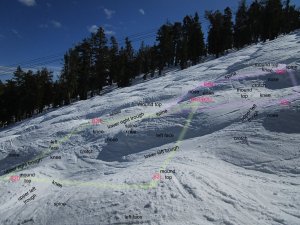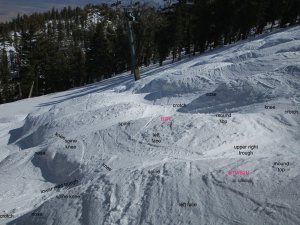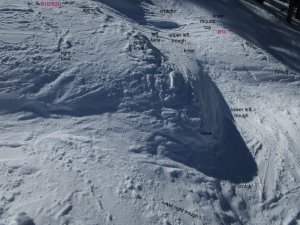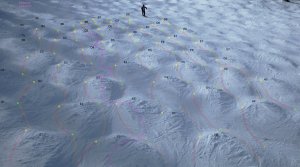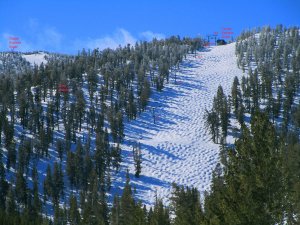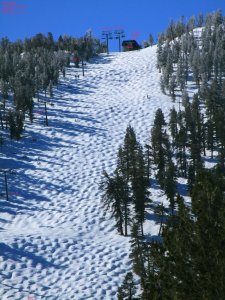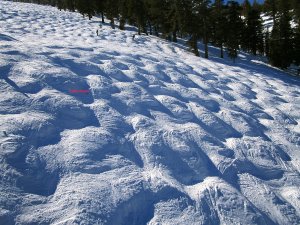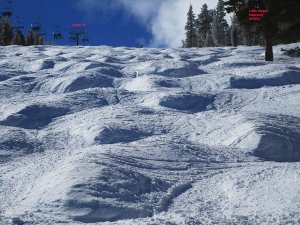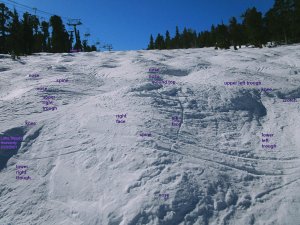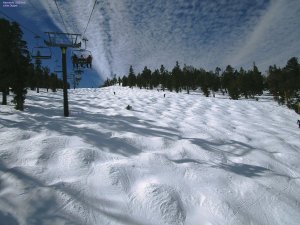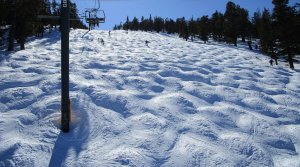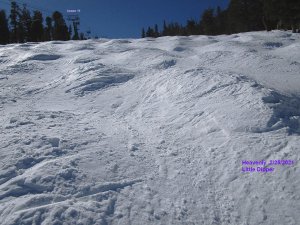I'll offer this unusual thread with images about a single run at a single resort given my SV hi tech and photography background with more information than you will likely want to know haha. Oh I know so many of you just love bumps slopes haha.
This is what I've been skiing lately given the Epic Tahoe Local Pass this year. Had not skied Heavenly in maybe 15 years and since that time many lifts have been replaced with detachables, runs have been changed, trees thinned. Since January 23 have skied the resort 8 times with the majority of my runs looping the Comet Express lift down these Little Dipper moguls. The bottom of the lift is about 8.6k and top 9.5k with a northern exposure so one of the highest elevation bump runs in the Tahoe region. As a bump skier, much prefer loose packed powder versus firm. And that is why I also found numbers of other local HV bump skiers here too that is important because it takes numbers of bump skiers regularly skiing such slopes to keep snow on bumps loose. Otherwise a mogul slope with lots of moguls but few bump skiers is only enjoyable mid winter when surfaces are dry powdery packed powder without any crusts from temperatures that stay below freezing.
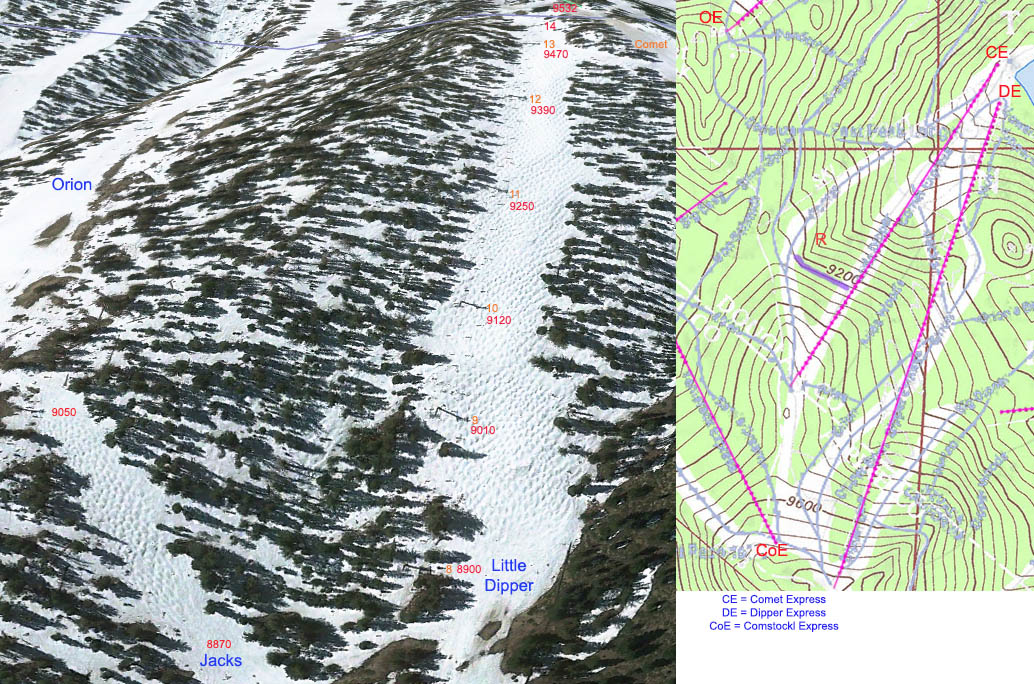
This first image above is a Google Earth 3D satellite image of Comet Express lift ( CE ) and Jacks and Little Dipper mogul runs. The wide forest between the two is Aries Woods. Off to the lookers right of Little Dipper is a narrower section of forest and beyond that the groomed Comet run. There is a no name road cutting across the lift between tower 13 and tower 14 just below the top that is the start of actual bumps at 9470 feet. One can reach that traverse road from the Dipper Express lift. The bottom of the mogul field is at 8900 feet thus a total vertical of about 570 feet that is adjacent to towers 8 through 13. Of course mogul skiers like bumps beneath lifts because well there is some show off in most of us haha. Unlike most mogul slopes, the pitch gradient varies due to a general convex shape, less steep at top to most steep at bottom with terracing between. The first terrace with small bumps at an easy gradient is between towers 13 and tower 12 at which point is a short steeper drop. A very nice slopes for intermediates to practice mogul skiing on but one needs to vector off skiers left and over to the groomed Comet run no lower else will be blocked by a sharp ravine in the forest.
The top of the run at tower 12 and 13 looking up from the chairlift:
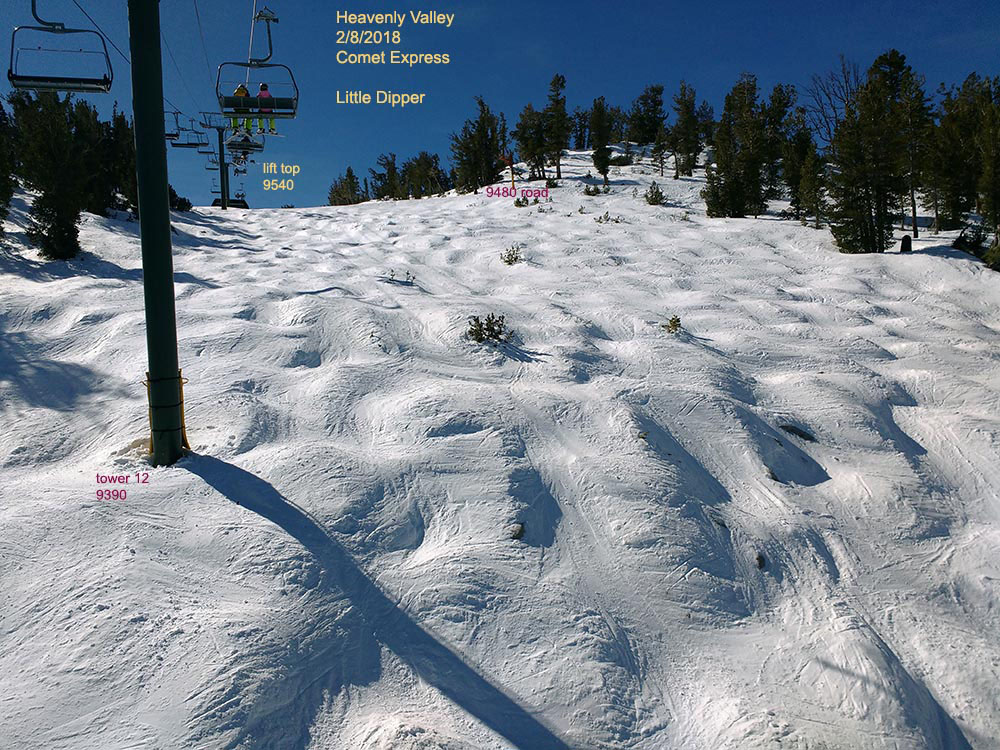
A bit lower below tower 12 looking up the slope:
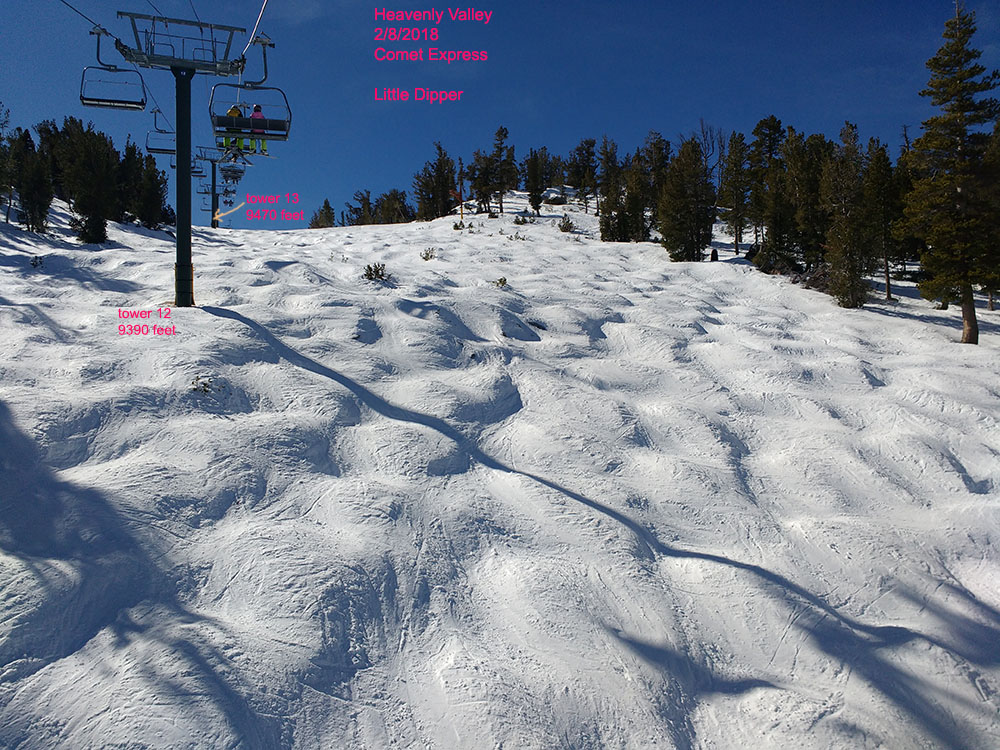
Looking down the slope from lift a bit below tower 12:
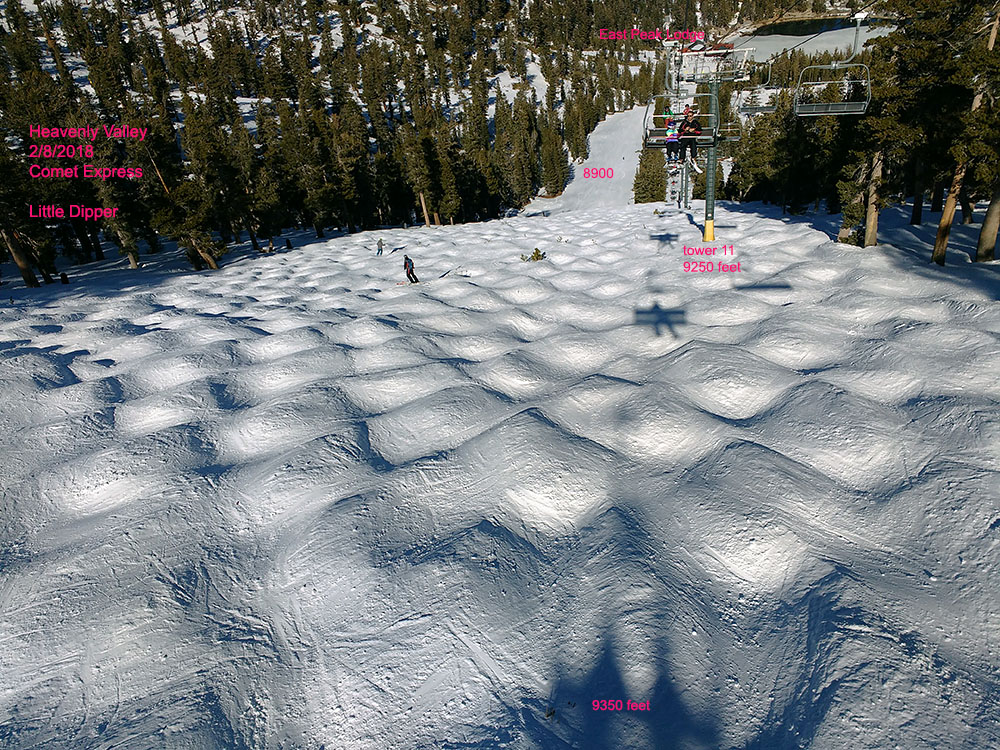
Quite a few locals have much better consistent technique than mr dave haha who is in it for the fun. Usually ski into the bumps blindly from the road at speed versus waiting at the top looking down for whatever line because I just react to whatever. Last week when the snow was still more packed powdered easier for a kat wimp, bounced non-stop from the top a smooth fall line down below tower 11 over a dozen times, about 250 feet vertical. And view from lift looking up the slope from below tower 11:
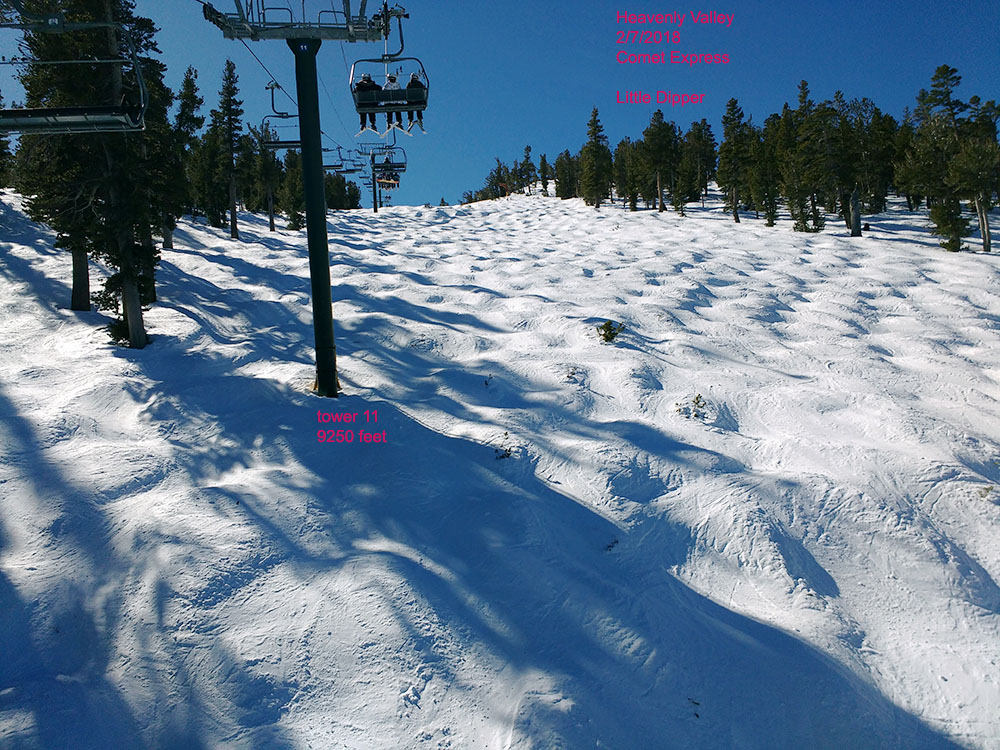
If one does go below tower 12, one can vector off skiers right through the wider Aries Woods, however less than advanced skiers are likely to find such rather tedious bouncing over wind ridges between pines haha. The next drop is at tower 11 with the slope below steeper on skiers right below the lift. A short terrace is at tower 10 and then a larger terrace just above tower 9 after which is the steepest section of the run. Currently it also has the most tree tops and rocks poking through that I use as an excuse to avoid. View up the slope from lift above tower 9 towards tower 10 and 11:

Most of the time I ski only down to tower 11 or 10 and then eject out through Aries Woods over to the Orion groomed run and then to the Jacks bumps that are lower gradient. Have always enjoyed going through trees because on powder days am likely to be in such places so good to be familiar. Also often stop to eat some untracked snow that my recent thread showed I'm rather alone in that creaturely habit among pugskists. Heck my mouth gets dry out in them woods.
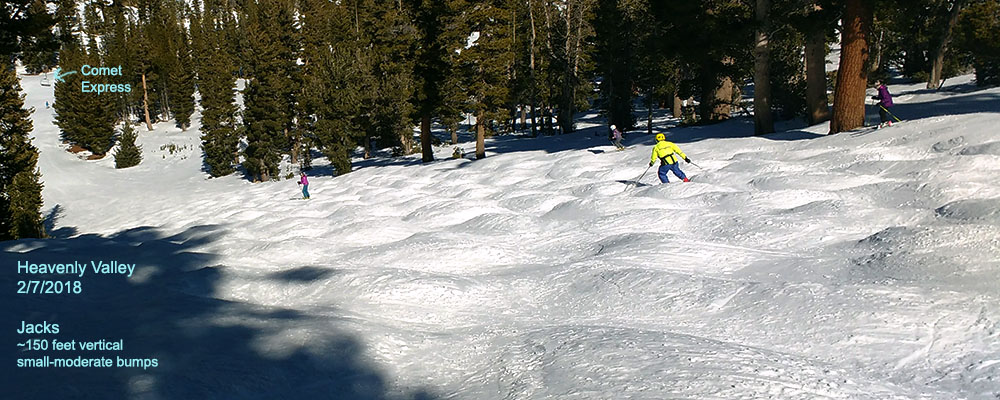
This is what I've been skiing lately given the Epic Tahoe Local Pass this year. Had not skied Heavenly in maybe 15 years and since that time many lifts have been replaced with detachables, runs have been changed, trees thinned. Since January 23 have skied the resort 8 times with the majority of my runs looping the Comet Express lift down these Little Dipper moguls. The bottom of the lift is about 8.6k and top 9.5k with a northern exposure so one of the highest elevation bump runs in the Tahoe region. As a bump skier, much prefer loose packed powder versus firm. And that is why I also found numbers of other local HV bump skiers here too that is important because it takes numbers of bump skiers regularly skiing such slopes to keep snow on bumps loose. Otherwise a mogul slope with lots of moguls but few bump skiers is only enjoyable mid winter when surfaces are dry powdery packed powder without any crusts from temperatures that stay below freezing.

This first image above is a Google Earth 3D satellite image of Comet Express lift ( CE ) and Jacks and Little Dipper mogul runs. The wide forest between the two is Aries Woods. Off to the lookers right of Little Dipper is a narrower section of forest and beyond that the groomed Comet run. There is a no name road cutting across the lift between tower 13 and tower 14 just below the top that is the start of actual bumps at 9470 feet. One can reach that traverse road from the Dipper Express lift. The bottom of the mogul field is at 8900 feet thus a total vertical of about 570 feet that is adjacent to towers 8 through 13. Of course mogul skiers like bumps beneath lifts because well there is some show off in most of us haha. Unlike most mogul slopes, the pitch gradient varies due to a general convex shape, less steep at top to most steep at bottom with terracing between. The first terrace with small bumps at an easy gradient is between towers 13 and tower 12 at which point is a short steeper drop. A very nice slopes for intermediates to practice mogul skiing on but one needs to vector off skiers left and over to the groomed Comet run no lower else will be blocked by a sharp ravine in the forest.
The top of the run at tower 12 and 13 looking up from the chairlift:

A bit lower below tower 12 looking up the slope:

Looking down the slope from lift a bit below tower 12:

Quite a few locals have much better consistent technique than mr dave haha who is in it for the fun. Usually ski into the bumps blindly from the road at speed versus waiting at the top looking down for whatever line because I just react to whatever. Last week when the snow was still more packed powdered easier for a kat wimp, bounced non-stop from the top a smooth fall line down below tower 11 over a dozen times, about 250 feet vertical. And view from lift looking up the slope from below tower 11:

If one does go below tower 12, one can vector off skiers right through the wider Aries Woods, however less than advanced skiers are likely to find such rather tedious bouncing over wind ridges between pines haha. The next drop is at tower 11 with the slope below steeper on skiers right below the lift. A short terrace is at tower 10 and then a larger terrace just above tower 9 after which is the steepest section of the run. Currently it also has the most tree tops and rocks poking through that I use as an excuse to avoid. View up the slope from lift above tower 9 towards tower 10 and 11:

Most of the time I ski only down to tower 11 or 10 and then eject out through Aries Woods over to the Orion groomed run and then to the Jacks bumps that are lower gradient. Have always enjoyed going through trees because on powder days am likely to be in such places so good to be familiar. Also often stop to eat some untracked snow that my recent thread showed I'm rather alone in that creaturely habit among pugskists. Heck my mouth gets dry out in them woods.

Last edited:

